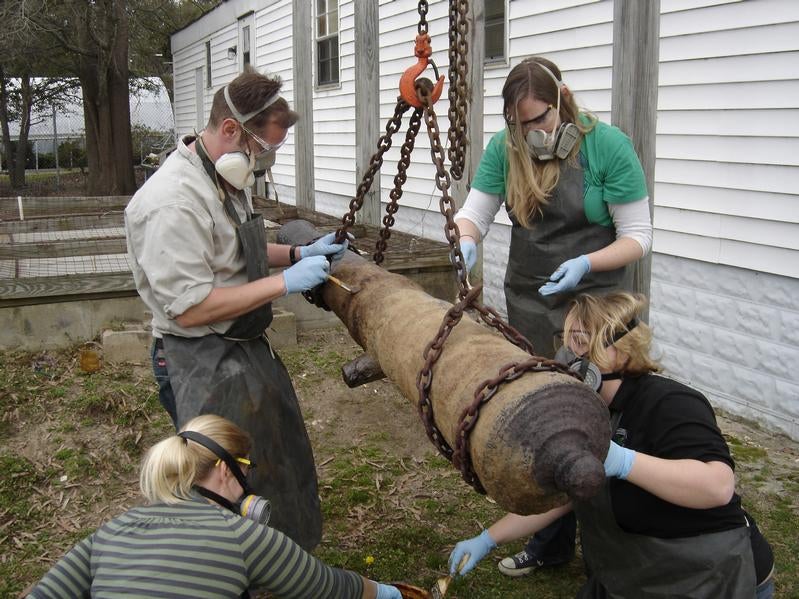ECU maritime students, faculty restore and explore origins of 325-year-old cannon

ECU students Joseph Lengieza, Emily Powell, Kate Schnitzer and Nicole Wttig, all in the Advanced Archaeological and Museum Artifact Conservation class, help to restore a cannon made in approximately 1685. Contributed photo.
GREENVILLE, NC — East Carolina University maritime studies students worked for several months last year under the watchful eye of their professor to clean and preserve a cannon, produced around 1685 and found in 2004 at Washington’s waterfront.
Nearly 325 years after the cannon’s estimated date of origin, the students are also trying to unlock the mystery of where the cannon was made and how it ended up in Washington, which was established in 1776.
According to Bradley Rodgers, professor of maritime studies at ECU, the presence of the gun is a total mystery and is one of the earliest and most historic pieces of ordnance found in the United States.
“It would be worth its weight in money to any collector,” said Rodgers. “There were no settlements around here at that time…. Theories could run the gamut from a pirate battery protecting their hangout, to a shipwreck now covered by waterfront or a fort built to protect early settlers.”
In 2004, during renovation of Washington’s waterfront, road workers unearthed the cannon. Rodgers and students used electrolytic cleaning to remove the layers of dirt and rust from the cannon. It was returned to Washington in 2006 but was not displayed to the public.
Over the next three years, the gun started to show signs of destabilization. So last fall, Rodgers, along with graduate student assistant Theresa Hicks and four students in the Advanced Archaeological and Museum Artifact Conservation class, brought the gun to the ECU Maritime Conservation Lab where it was refinished.
On March 29, Rodgers and his students returned the centuries-old artifact to its rightful home in Washington, where it will be on permanent, public display at the North Carolina Estuarium, 223 E. Water Street.
“There are approximately 12 shipwrecks located directly in front of the estuarium near Castle Island,” said Rodgers. “So this is a fitting place for it.”
In an effort to shed more light on this ancient gun, Rodgers will lead a free, public presentation, “Washington’s Mystery Gun, Its Conservation and Implications,” at 3 p.m. April 9 at the North Carolina Estuarium. A reception will follow.